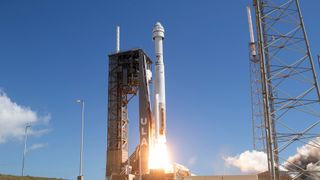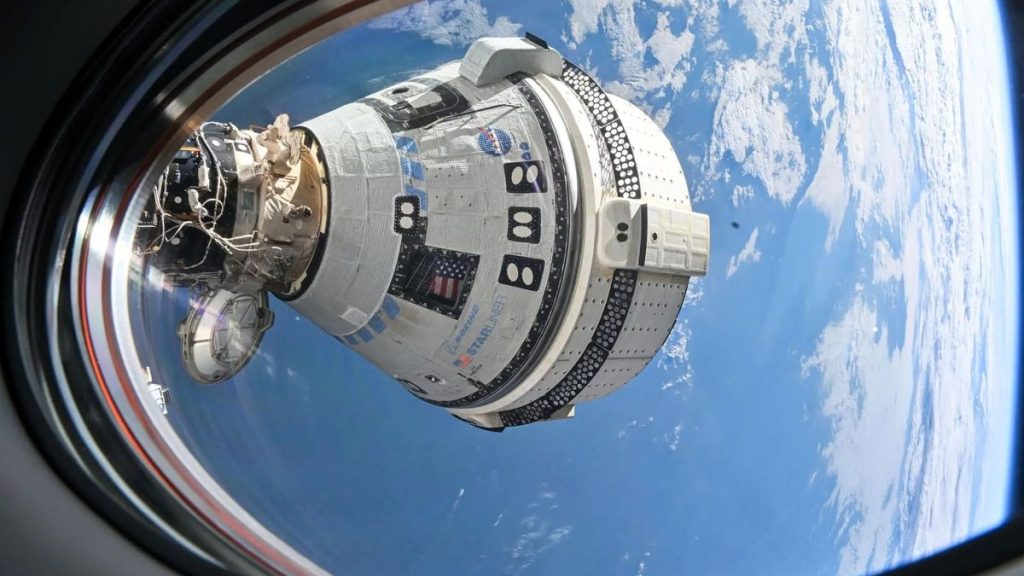Boeing may sell off its space business, including its Starliner program, amid large financial losses for the company, a media report suggests.
The discussions are said to be “at an early stage,” according to an exclusive in the Wall Street Journal. The reported talks come less than two months after Starliner completed its first astronaut test flight on Sept. 6 by touching down in New Mexico autonomously, without its two crewmembers.
Boeing is known for decades of work with NASA, including being the prime contractor for the International Space Station. (The company continues engineering support services for ISS to this day.) But Boeing is facing mounting financial issues this year, including a protracted strike by its largest labor union and significant deficits in the Starliner program.
The WSJ report emphasizes, however, that discussions about selling the company’s space business — spurred by Kelly Ortberg, Boeing’s new chief executive officer, who was appointed Aug. 8 — are “at an early stage.”
Related: When will Boeing’s Starliner fly astronauts again? NASA still doesn’t know
And it’s uncertain how much of the business may be sold, if a sale happens at all. For example, Boeing may keep its role in leading the Space Launch System (SLS) rocket for NASA’s Artemis program of moon exploration, the WSJ report noted. The SLS successfully launched the Artemis 1 uncrewed mission to lunar orbit in 2022 and will launch astronauts around the moon as soon as 2025, with Artemis 2.
Boeing also has a 50% stake, along with Lockheed Martin, in United Launch Alliance, a national security focused-launch provider whose Atlas V rocket launched the Starliner mission on June 5. Lockheed and Boeing have reportedly been looking to sell ULA, as the joint venture moves into launches with a next-generation rocket known as Vulcan Centaur. Vulcan completed its second-ever launch on Oct. 2.
Starliner’s development has resulted in financial losses for Boeing. In a filing with the U.S. Securities and Exchange Commission on Oct. 23, for example, Boeing reported a $250 million charge in the third quarter of its fiscal year “primarily to reflect schedule delays and higher testing and certification costs” for Starliner. Boeing’s second-quarter results showed an additional $125 million loss on the program.
The spacecraft is a small part of Boeing’s defense, space and security business, which reported $3.1 billion in losses (against $18.5 billion in revenues) in the first nine months of 2024, according to Boeing’s Q3 results. Boeing’s head of the division, Ted Colbert, was removed in September, according to multiple media outlets, including the Associated Press.

Starliner received the lion’s share of Boeing coverage in space circles this year, however, following its Starliner astronaut test flight. As a developmental ISS mission, issues were expected, and schedules were not necessarily set in stone.
That said, propulsion problems during the capsule’s journey to the ISS surprised the team, given that Starliner’s engineers had already addressed thruster issues that cropped up during uncrewed flights in 2019 and 2022. Five out of 28 thrusters in Starliner’s reaction control system for in-space maneuvers failed on the recent astronaut mission, which was known as Crew Flight Test (CFT).
Starliner managed to dock successfully to the ISS on June 6 despite the thruster problems. Boeing and NASA examined the thruster issues for nearly two months and repeatedly delayed Starliner’s departure from the ISS. But they could not find the root cause and remedy, and NASA ultimately decided that bringing the astronauts back to Earth on Starliner was too much of a risk.
The two astronauts assigned to Starliner, former U.S. Navy test pilots Butch Wilmore and Suni Williams, saw their expected 10-day mission extended to at least eight months as their spacecraft departed. They are now expected to return home in February 2025 aboard the other commercial craft used by NASA, SpaceX’s Crew Dragon.
NASA awarded both SpaceX and Boeing multi-billion dollar contracts in 2014 to ferry astronauts to and from the ISS. Crew Dragon was based on the successful cargo Dragon craft that first flew to space in 2012, while Starliner is a completely new spacecraft. Crew Dragon has now launched on nine operational astronaut missions to the ISS for NASA since its 2020 crewed test flight.
Starliner was supposed to fly its first operational mission, known as Starliner-1, in 2025 with three astronauts on board. Recently, however, Richard Jones, deputy program manager of NASA’s Commercial Crew Program at Johnson Space Center in Houston, said the agency is still determining next steps after the troubled test flight.
“We’re just starting that — just trying to understand how to correct and rectify the issues that are on the table,” Jones said on Oct. 25. “The schedules associated with how long, and what will be required in that area, [are] in front of us, and we’ll be working hard on that to know.”

